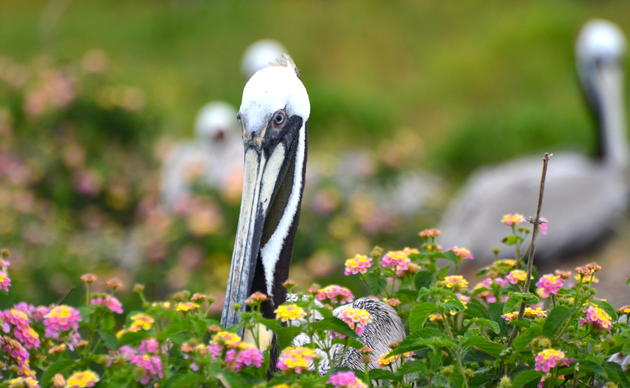Least Tern
Least Terns prefer to nest on relatively open sites on beaches and islands that are kept free of vegetation by natural scouring from tidal or river action. Ideally a nest site is largely free of vegetation, above high water levels and safe from ground predators. The Least Tern may change breeding locations frequently in response to changing environmental conditions and commonly uses sand, shell, or gravel as a nesting substrate. Due to the high salinity of new dredge material inhibiting vegetation growth, the species readily uses newly created spoil islands. Preferred vegetation cover has been found to be 5-10% in New York and 0.2-5% in California. Colony site tenacity has been found to be limited by changes in vegetation cover, predators, human disturbance, floods and colony size.
In marine populations, the least tern feeds in a variety of shallow water habitats including bays, lagoons, estuaries, river and creek mouths and individuals were observed to be most successful foraging in water >1 m deep.
For more information about Least Terns, including identification information, visit their page on the Cornell Lab of Ornithology.
Text References
- Gochfeld, M. 1983. Colony site selection by Least Terns: physical attributes of sites. Colon. Waterbirds 6:205-213.
- Minsky, D. 1987. Physical and social aspects of nest site selection in colonies of the California Least Tern. Master's Thesis. California State Univ., Long Beach, CA.
- Thompson, B. C., J. A. Jackson, J. Burger, L. A. Hill, E. M. Kirsch, and J. L. Atwood. 1997. Least Tern (Sternula antillarum).in A. Poole, editor. The Birds of North America Online Cornell Lab of Ornithology, Ithaca.
How you can help, right now
Join Audubon Texas Today
Becoming a member supports our local work protecting birds and the places they need.
Consider a Legacy Gift for Texas
Planned gifts and bequests allow you to provide a lasting form of support to Audubon Texas.
Subscribe to Our Newsletter
Subscribe to our newsletter for updates about Audubon Texas's conservation work, and news about our activities and local events.




